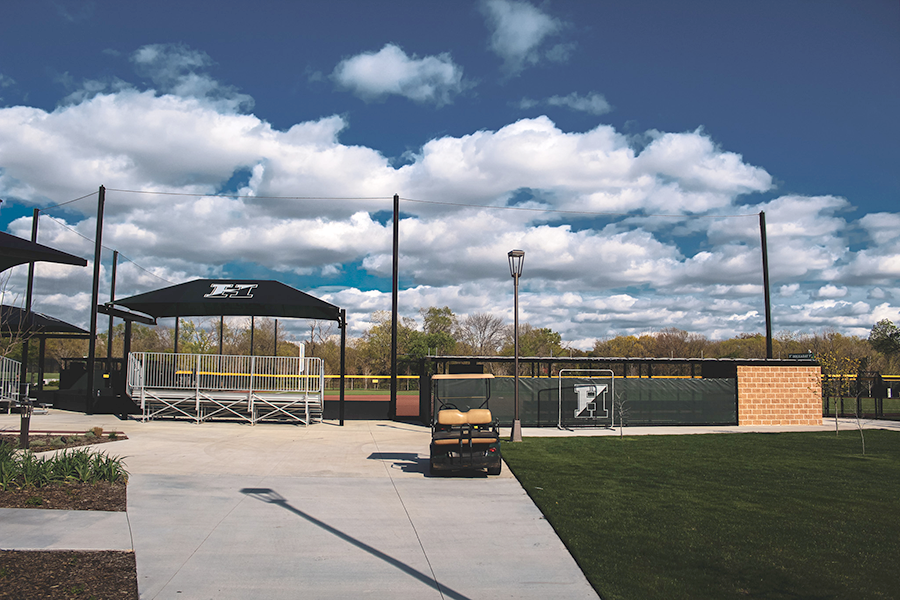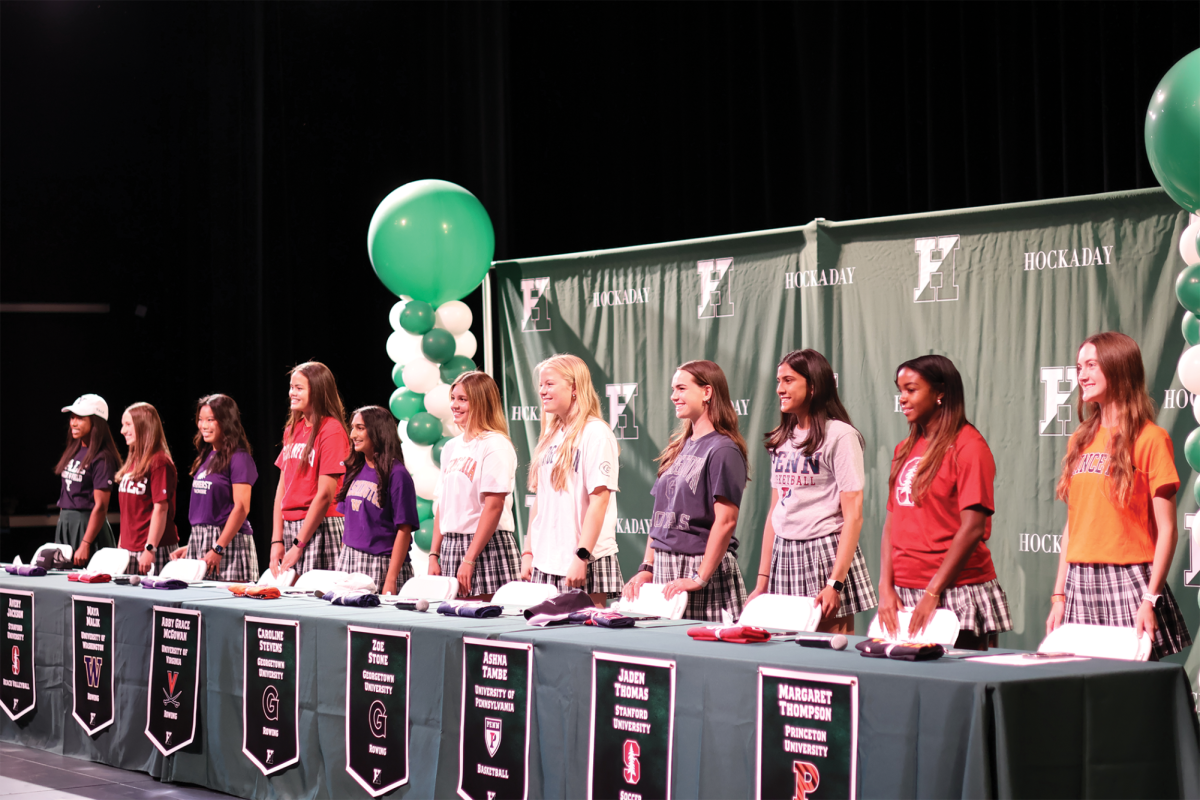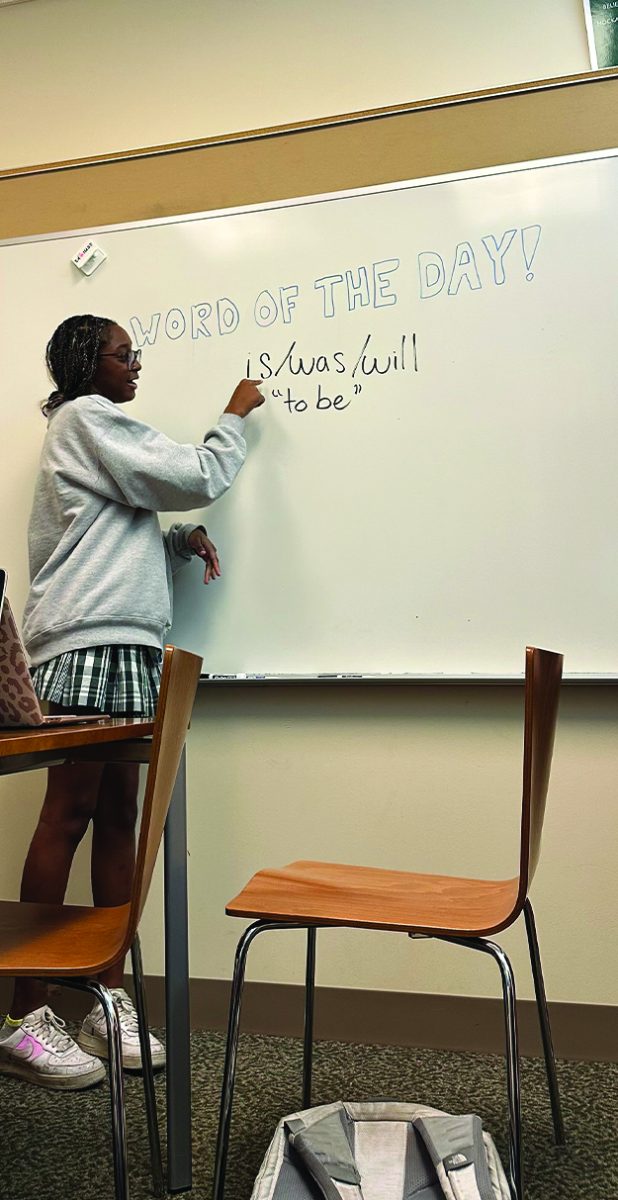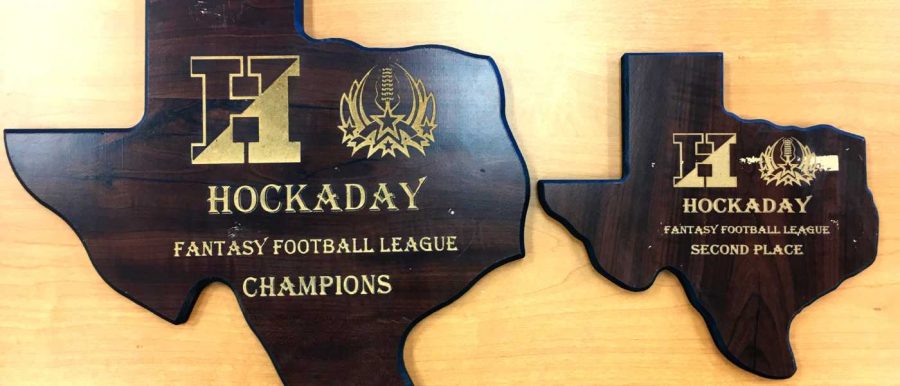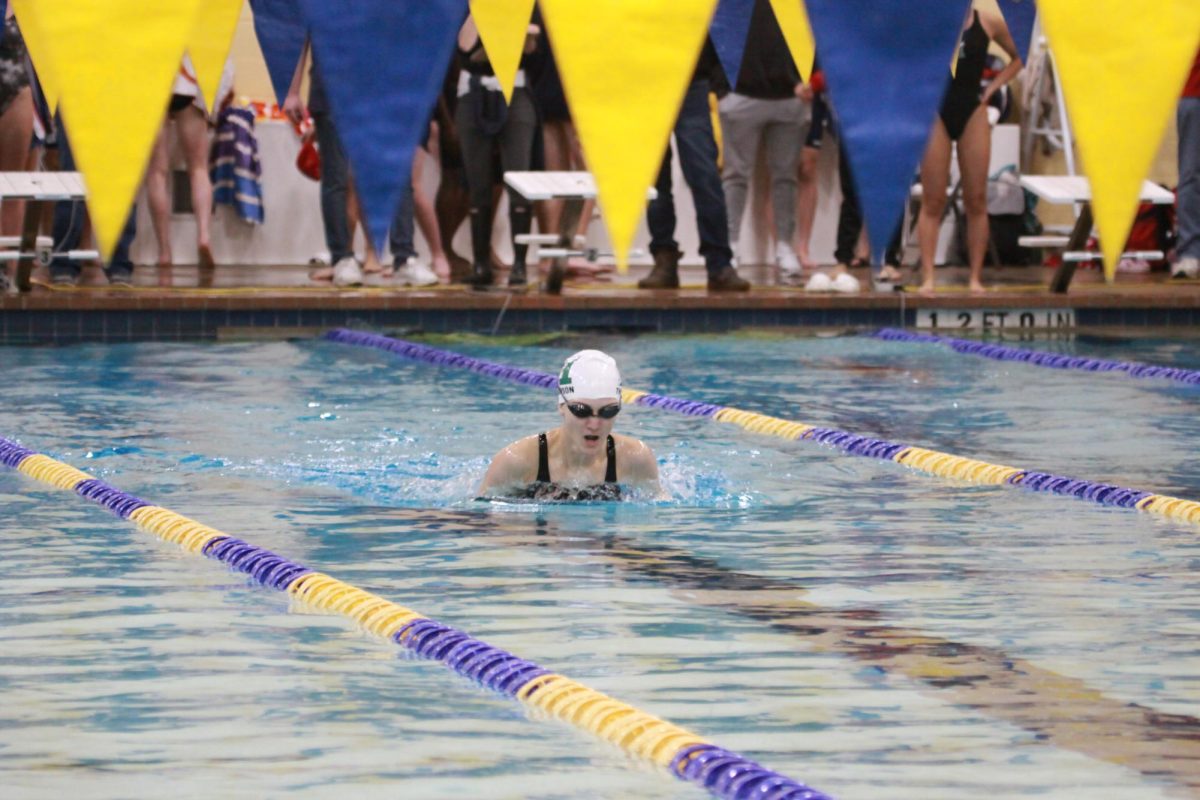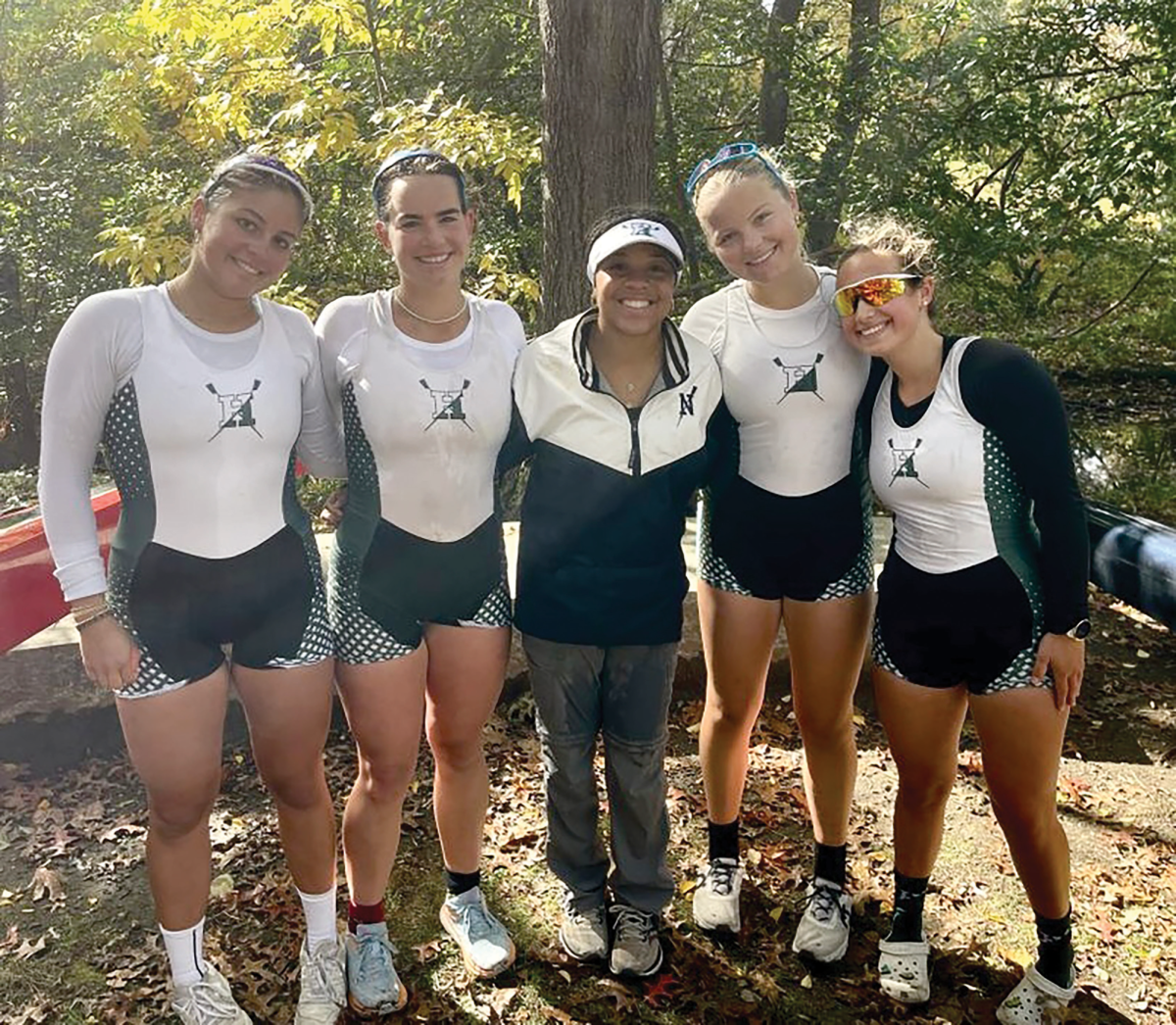They first met in September at Village Burger Bar, gathering to eat dinner and to begin the player drafting process.
These 12 Hockaday faculty members—which included Upper School math teacher Jessica Chu, Physical Education Coordinator Mitch Clark, Director of Service Learning Laura Day, Assistant Director of Debate and Forensics Jordan Innerarity, History Department Chair Steve Kramer, Director of Libraries and Academic Research Corey Lott, Director of Residence Life and Global Outreach Meshea Matthews, Head Athletic Trainer Jeanne Olson, Assistant to the Assistant Head of School for Academic Affairs Kelli Rortvedt, Physical Education Teacher Rod Skaife, International Program Coordinator Gary Stollar and Director of Debate and Forensics Chuck Walts—thus formed the school’s first faculty fantasy football league using the ESPN website, calling their league the Killer Daisies in honor of the school’s mascot.
A Season Begins
When Chu first heard that fellow faculty member Day was planning to form a workplace fantasy football league, her first reaction was: Why not?
“I already participated in a fantasy football league with friends outside of work, so why not do one at work?” Chu said. “Fantasy football to me is a lot of fun. I’m a huge Dallas Cowboys fan, but with fantasy football, I’ll actually watch other games because I’m rooting for individuals on my team.”
After drafting players at the initial meeting at Village Burger Bar, in alignment with the real National Football League season, each faculty member set up a lineup of football players and played each week. The regular season, which included all 12 participants, lasted for 13 weeks while the playoffs, which included the top four participants, lasted for four weeks and ended in early January 2017.
Each faculty member had the opportunity to name his or her team. Kramer decided to name his team “The Venus Flytraps,” playing along the theme of plants as evinced in the name of the “Killer Daisies” league. Meanwhile, Stollar decided to name his team “The Ocelots,” citing the reason as “because they are both fierce and beautiful.” Employing a pun on San Francisco 49ers running back Carlos Hyde’s name, Chu named her team “No Place to Hyde.”
With their eyes on the prize, these faculty members researched players before drafting them and tracked the performance of players on their fantasy teams.
“[The tournament] didn’t dominate my life, but I wanted to win, and I would follow it sometimes by watching the games,” Kramer said. “If you look at the ticker under a professional football game, one ticker that comes across is fantasy rankings.”
Additionally, the beginning of the season invited the arrival playful, competitive banter between the faculty members.
“We had a running joke,” Chu said. “If you beat someone, you’ll make silly little jabs, but if you lost to someone, you kind of want to avoid them.”
Strategy and Setbacks
An obstacle came very early for Kramer due to a malfunction with his ESPN accounts: the computer automatically drafted Kramer’s players rather than letting him pick. Despite this, Kramer came out of the year with a winning record.
“I ended up with a good team because the computer was kind to me and gave me [Atlanta Falcons quarterback] Matt Ryan, and he had a stellar year,” Kramer said. “I had an up-and-down season. If I had won, I’d win by three or four points. If I had lost, I’d lose by 30 points.”
Ultimately, Kramer emerged from many initial matches victorious, beating two of the four competitors who advanced to the playoffs during the final weeks of the tournament. However, because his point total was lower than those of other opponents, Kramer was unable to advance to the playoffs.
In preparation for each week’s match, faculty members researched the various football players to decide who they wished to play that week.
“I did a lot of research before the draft on how players were ranked,” Innerarity said. “Who performs well? Who is injured? Sometimes it’s kind of a gamble. You can do all the research and watch ESPN and see who’s trending well, but players can have bad weeks.”
Walts agrees, and his general strategy was very straightforward: pick the best players.
“There were some tough decisions about who to play when,” Walts said. “Sometimes you get off rhythm and you miss players having a good week.”
An overarching challenge for all competitors was the occurrence of injuries among the players. Chu recalls this as especially hurting her team during the third week of the season, resulting in her bumping down the rankings.
“What ended up happening to my team was I was hit by so many injuries,” Chu said. “I drafted all of these people who unfortunately were injured in the first few weeks.”
Playoffs: The Final Four Weeks
At the end of the first 13 weeks in the season, four faculty members advanced to the playoffs: Innerarity, Skaife, Stollar and Walts. The other nine faculty members spent the final four weeks playing in a consolation bracket.
“My season was slow and steady. I would win two weeks in a row and then maybe lose one,” Stollar said. “I didn’t know until just before playoffs were starting that I had scored enough points.”
In the end, Innerarity won first place, with Stollar as the runner-up, Walts as third place, and Skaife as fourth place.
“I was leading most of the season until I got to the semifinals and lost to Mr. Stollar,” Walts said. “That was heartbreaking.”
On the other hand, Innerarity and Stollar clashed head-to-head, vying for the title of champion of the Killer Daisies league. During the second-to-last week, Innerarity beat Stollar. During the last week, Stollar beat Innerarity. Thus, the two had split the Super Bowl in a tie; however, Innerarity had earned a greater net total of points and consequently came in first.
“A lot of it was about being flexible and seeing who could plug a lot of holes to limp your team to the end,” Innerarity said. “I liked my strategy. Everybody usually goes for the running back first [when drafting] because they’re always scoring points, but I went for the quarterback first: [Greenbay Packers player] Aaron Rodgers, and that worked well for me.”
As a prize, Innerarity dug out a few old debate awards, which were plaques in the shape of the state of Texas. He has enlisted the help of Upper School science teacher Leon de Oliveira, who will use a laser to etch onto the front of the plaques: “Hockaday Fantasy Football Champion” and “Hockaday Fantasy Football Runner-Up.”
An Ongoing Tradition
The tournament brought together 12 Hockaday faculty members who came from a variety of departments in the school, including math, history, administration, debate and physical education, to name a few.
Thus, the overwhelming consensus from those who participated in the Killer Daisies 2017 fantasy football league was that the league allowed for these faculty members to bond over a shared investment and interest in football.
“I’m new [to Hockaday] this year, so it was a way for me to get to know some of the other faculty and staff,” Stollar said. “We’d see each other in the hallway or email each other. Mr. Kramer and i would talk about it. That’s what was most fun: getting to know my colleagues.”
Kramer, too, enjoyed the friendly buzz of competition.
“Any close game was always exciting, and I had a number of them,” Kramer said.
Every faculty member who participated in the Killer Daisies fantasy football league this year is looking forward to playing against next year and perhaps expanding their league.
“I recommend this to people who are interested in football or want to learn about football because it makes the sport more exciting,” Chu said. “If you don’t have a team to root for you, you have individuals to root for.”
These faculty members also have some strategy tweaks in mind looking ahead to 2018. Kramer, for one, hopes that his computer will work properly next year and allow him to select his own players.
Noting that support for the faculty fantasy football league has grown tremendously, Innerarity envisions multiple leagues for the Hockaday faculty next year. He also hopes to launch a National Collegiate Athletic Association March Madness bracket for the faculty in the future.
For now, though, the Killer Daisies league is here to stay.
“I definitely think this is going to a staple from now on,” Innerarity said.
– Elizabeth Guo – Copy Editor –



